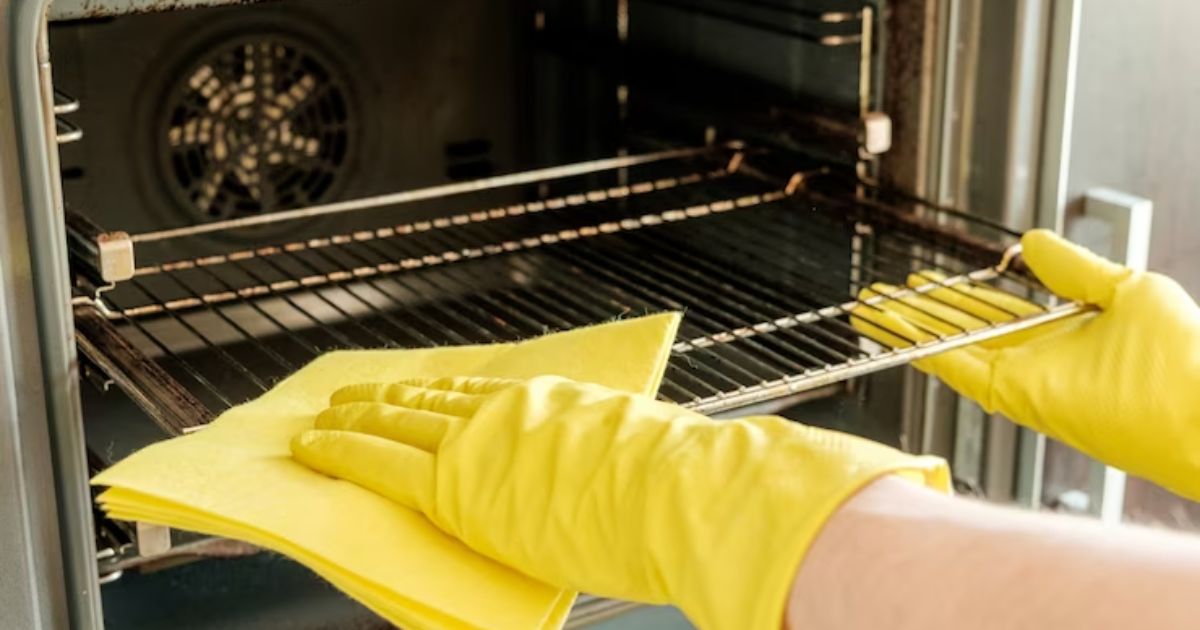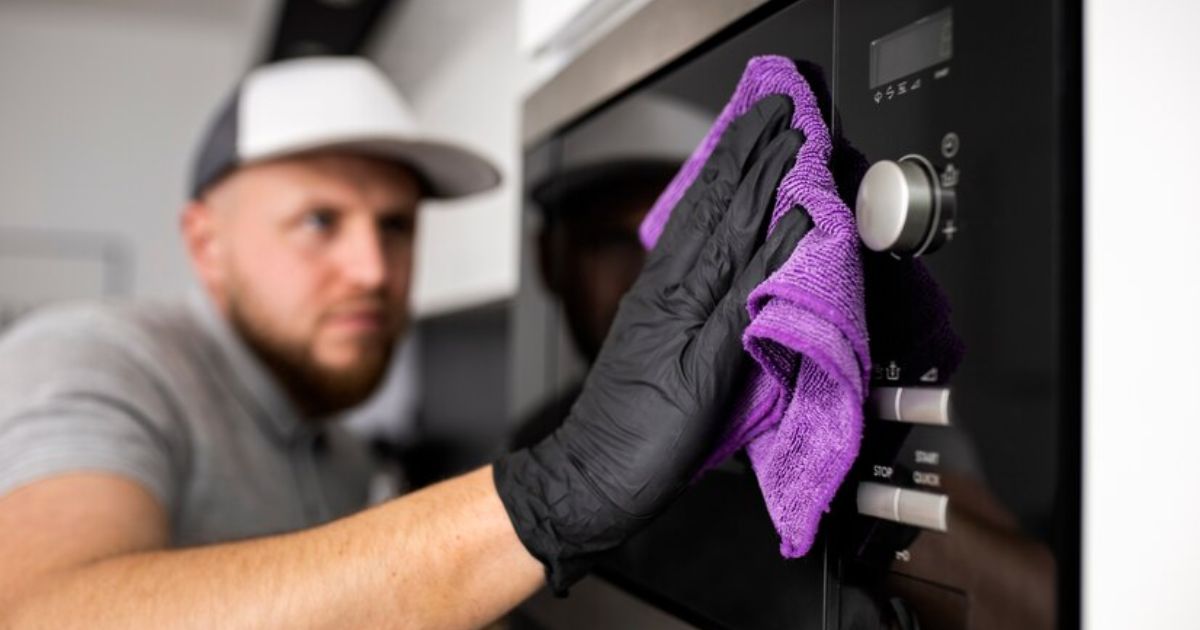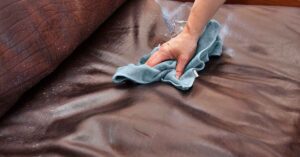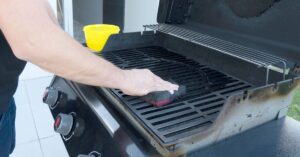“Are you tired of spending hours scrubbing your oven? Well, fear not, as the self-cleaning oven is here to save the day! In this article, we will delve into the intricacies of how long a self-cleaning oven takes to complete its cycle. From factors that affect cleaning time to standard and extended cleaning options, we will provide you with all the technical details and expert advice you need to optimize your cleaning efficiency. So, let’s dive in and unlock the secrets of this window cleaning solution and time-saving marvel!
Key Takeaways
- The duration of a self-cleaning oven cycle varies depending on the oven model and level of dirtiness, with the average cycle taking 2 to 6 hours.
- Factors such as oven size, level of dirt, previous cleaning history, and temperature settings can all impact the cleaning time.
- A standard self-cleaning cycle typically lasts 2 to 4 hours, but some ovens offer quicker options for lightly soiled ovens.
- Manufacturers also provide extended self-cleaning options, such as steam cleaning and high-temperature cleaning, for tougher cleaning tasks.
Self-Cleaning Oven Cycle Duration
The self-cleaning oven cycle typically lasts for several hours, with most models requiring a thorough cleaning once every few months. During the self-cleaning cycle, the oven heats up to extremely high temperatures, usually around 900°F (482°C), in order to burn off any food particles and grease that have accumulated inside. The duration of the self-cleaning cycle can vary depending on the oven model and the level of dirtiness.
On average, the self-cleaning cycle can take anywhere from two to six hours. Some ovens come with a shorter “quick clean” option that lasts around two hours, while others have a longer deep cleaning cycle that can last up to six hours. It is important to note that during the self-cleaning cycle, the oven will lock itself for safety reasons, preventing accidental access to the extreme heat.
Factors That Affect Cleaning Time
Several factors can influence the cleaning time of a self-cleaning oven. Understanding these factors can help users plan their cleaning schedule accordingly. Here are some key factors to consider:
| Factors That Affect Cleaning Time | Explanation |
|---|---|
| Oven Size | Larger ovens generally require more time to complete the cycle. |
| Level of Dirt | Heavily soiled ovens may take longer to clean. |
| Previous Cleaning | If the oven hasn’t been cleaned for a long time, it may require additional time to remove built-up grime. |
| Temperature Setting | Higher temperature settings can help speed up the cleaning process. |
| Oven Model | Different oven models have varying cleaning times. |
Standard Self-Cleaning Cycle Length
The self-cleaning cycle of a standard oven typically lasts for a specific duration. Here are a few key points to consider about the standard self-cleaning cycle length:
- On average, the standard self-cleaning cycle of an oven lasts between 2 to 4 hours. However, this can vary depending on the brand and model of the oven.
- The duration of the self-cleaning cycle is influenced by the level of dirt and grime inside the oven. Heavily soiled ovens may require a longer cleaning cycle.
- Some ovens offer a quick self-clean option that lasts around 1 hour, which is ideal for lightly soiled ovens.
Understanding the standard self-cleaning cycle length is crucial for planning and managing your oven cleaning process effectively. However, if you require more intensive cleaning or have specific needs, there are also extended self-cleaning options available. Now, let’s explore these extended self-cleaning options in more detail.
Extended Self-Cleaning Options
To further cater to specific cleaning needs and provide more intensive cleaning options, manufacturers offer extended self-cleaning options for ovens. These extended cycles go beyond the standard cleaning duration and offer additional features to enhance the cleaning process. Some extended self-cleaning options include steam cleaning, which utilizes the power of steam to loosen and remove stubborn stains and grease.
Others incorporate high-temperature cleaning, where the oven reaches even higher temperatures than in the standard cycle, effectively burning off any residual food particles or grease. These extended self-cleaning options are designed to tackle tougher cleaning tasks and ensure a more thorough clean. Moving forward, we will explore tips for optimizing the cleaning efficiency of your self-cleaning oven to make the most out of these extended cleaning options.
Tips for Optimizing Cleaning Efficiency
To optimize cleaning efficiency, one can utilize certain techniques. Here are three tips for optimizing the cleaning efficiency of a self-cleaning oven:
- Pre-clean the oven: Before starting the self-cleaning cycle, it is advisable to pre-clean any visible debris or spills inside the oven. This will help the self-cleaning function to work more effectively and prevent excessive smoke or odors during the cleaning process.
- Remove oven racks and accessories: To ensure thorough cleaning, it is recommended to remove oven racks and accessories before starting the self-cleaning cycle. These can be cleaned separately using mild soap and water.
- Ventilate the kitchen: Self-cleaning ovens can produce smoke and odors during the cleaning process. To minimize these effects, it is important to properly ventilate the kitchen by opening windows or using an exhaust fan. This will help maintain a comfortable environment while the oven is cleaning itself.
FAQ,s
Can I Use My Self-Cleaning Oven for Other Purposes, Such as Slow Cooking or Dehydrating Food?
A self-cleaning oven is primarily designed for the purpose of cleaning itself by reaching high temperatures. While it is not recommended to use it for slow cooking or dehydrating food, some models may have additional features for such purposes.
Are There Any Safety Precautions I Should Take Before Starting the Self-Cleaning Cycle?
Before starting the self-cleaning cycle in a self-cleaning oven, it is essential to take safety precautions. These may include removing any flammable items, ensuring proper ventilation, and following the manufacturer’s instructions for a safe and effective cleaning process.
Can I Stop the Self-Cleaning Cycle if I Need to Open the Oven Door?
Yes, you can stop the self-cleaning cycle if you need to open the oven door. However, it is recommended to avoid doing so, as it disrupts the cleaning process and may cause potential safety hazards.
How Often Should I Run the Self-Cleaning Cycle to Keep My Oven in Good Condition?
To maintain optimal condition of your oven, it is recommended to run the self-cleaning cycle every 3-6 months. This frequency helps remove built-up grease, food particles, and other residues, ensuring efficient operation and extending the lifespan of your appliance.
Are There Any Specific Cleaning Products or Solutions That I Should Avoid Using in a Self-Cleaning Oven?
When cleaning a self-cleaning oven, it is important to avoid using any cleaning products or solutions that are not specifically recommended by the manufacturer. This can prevent damage to the oven and ensure its optimal performance.
Conclusion
In conclusion, the duration of a self-cleaning oven cycle depends on various factors such as the level of dirtiness and the chosen cleaning option. Standard self-cleaning cycles typically last around two to four hours, while extended options can take up to six hours. It is important to optimize cleaning efficiency by following manufacturer’s instructions and regularly maintaining your oven. Remember, a self-cleaning oven can save you time and effort in cleaning, allowing you to focus on other important tasks.










